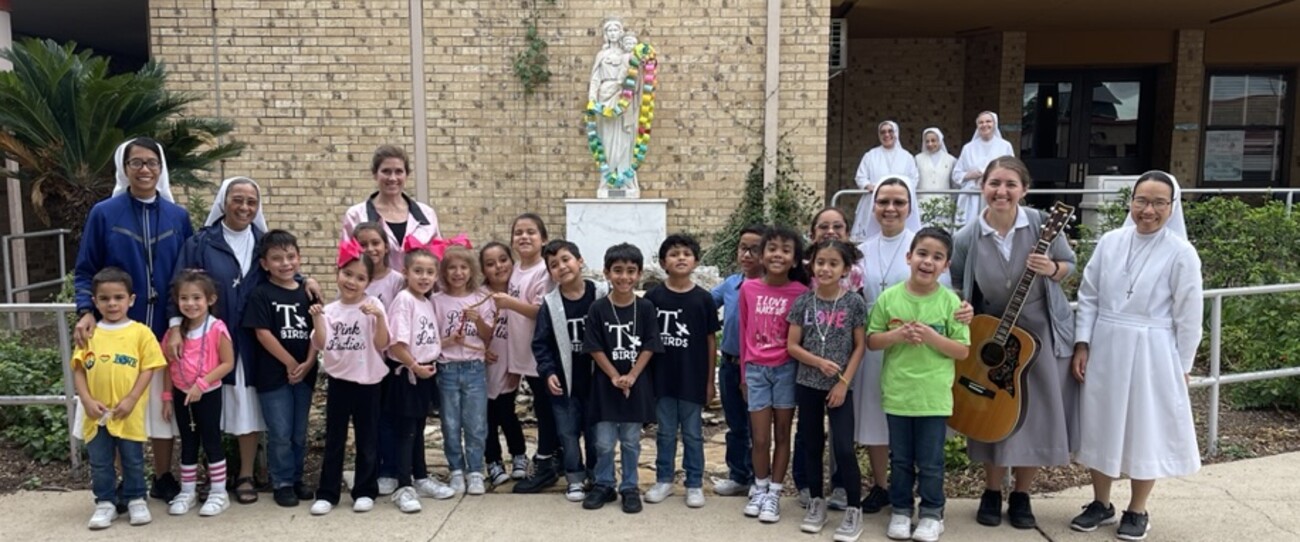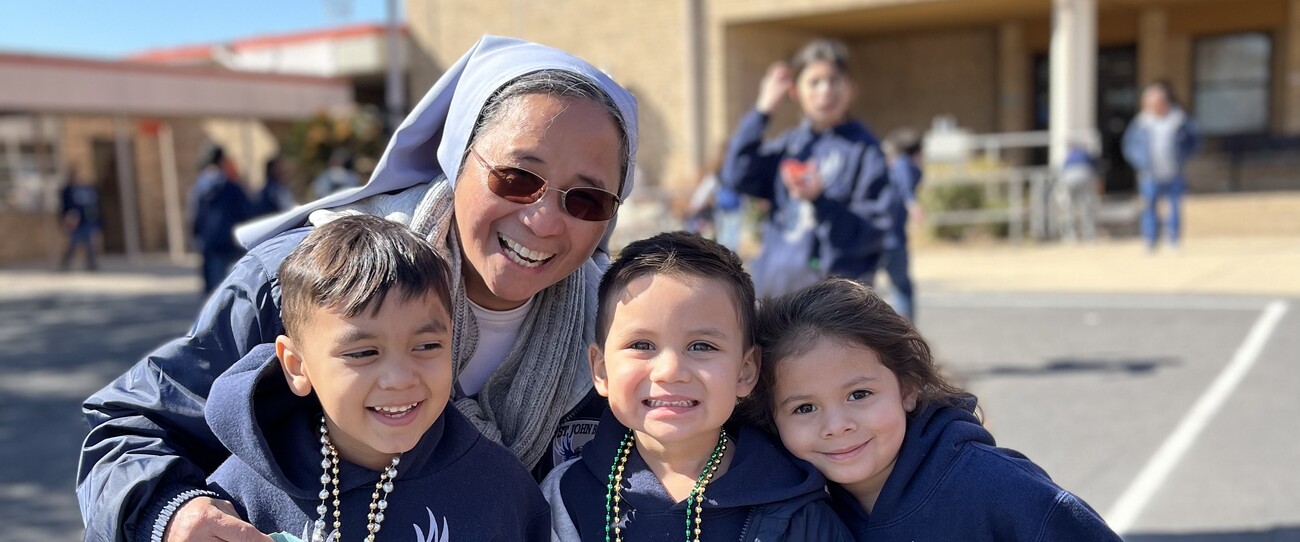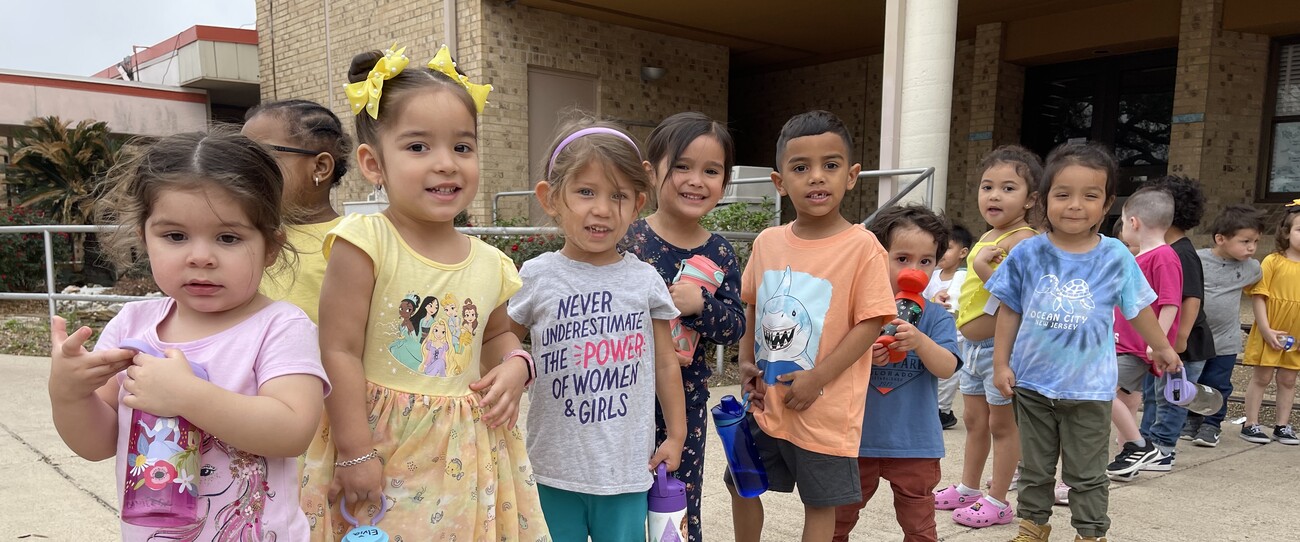Our History
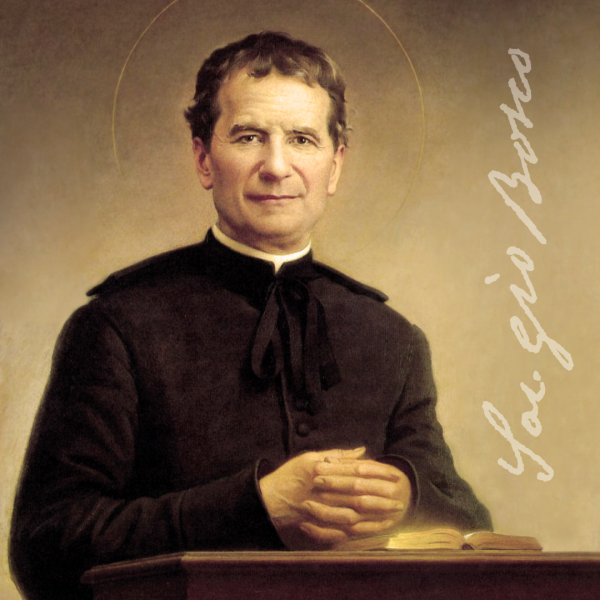
St. John Bosco School grew from a tiny seed planted by a few pioneer Salesian Sisters coming to the United States after having experienced the religious persecution in Mexico. As missionaries, they were able to begin a much needed Catholic School for the Westside on 2401 West Travis in the early forties. Around 1949 it was called St. John Bosco School.
The Salesian Sisters founded and established St. John Bosco School in San Antonio, Texas as a pre-school in 1940, then the elementary school in 1957, and the junior high in 1961. This was the era of our Holy Father, Pope Pius XII, President Dwight D. Eisenhower and Archbishop Robert E. Lucey.
In 1951, Monsignor John L. Morkovsky, Superintendent of Catholic Schools of the Archdiocese, visited St. John Bosco School, which was then in an old two-story wooden house. He encouraged the Sisters to move to a more suitable facility. The Sisters had insufficient funds to do so and asked that they be allowed to move to San Fernando Cathedral School. Archbishop Lucey granted permission with the stipulation that they seek the means to build a much-needed Catholic school for people of the Westside of San Antonio.
By 1956 the Sisters had received support from key benefactors to break ground on the existing site on the feast of the Annunciation, March 25, 1956 and the blessing on September 1, 1957. On September 9, 1957, the new St. John Bosco School opened its doors to eager young students in grades kinder, first, second and third. The first enrollment was 158 students, housed in six classrooms. The convent had accommodations for nine sisters and thirty student boarders. In the course of the years facilities were added to provide classrooms to include all the grades up to eighth grade, a cafeteria, chapel and better accommodations for the sisters. The last facility to be added was the gym in 1990.
St. John Bosco School received its first full accreditation from TEA in 1969 and continued to maintain this status throughout the years. Today, enrollment is at 440.
Currently, the Sisters saw a need to expand their mission to involve even younger children. On Tuesday, July 5, 2005, St. John Bosco opened its doors once again to a brand new Child Development Center serving children from six weeks of age to three years. Through the detailed preparations of trained teachers, developmental programs are exercised each day. Children receive a planned learning environment which offers a variety of materials designed to facilitate all domains of development. Parents watch as their children grow and learn, gaining confidence as they master early developmental stages preparing them for their academic regimen for reading, writing and math. St. John Bosco School is now a one stop haven for families.
In addition to the immeasurable value of the process of accreditation and licensing, key faculty, staff and volunteer professionals are engaged in a planning process to establish long-range strategies and initiatives for St. John Bosco School. It is our fondest dream that we continue being a viable source of Catholic education for the youth of this beautiful, Westside area of San Antonio for many years to come.
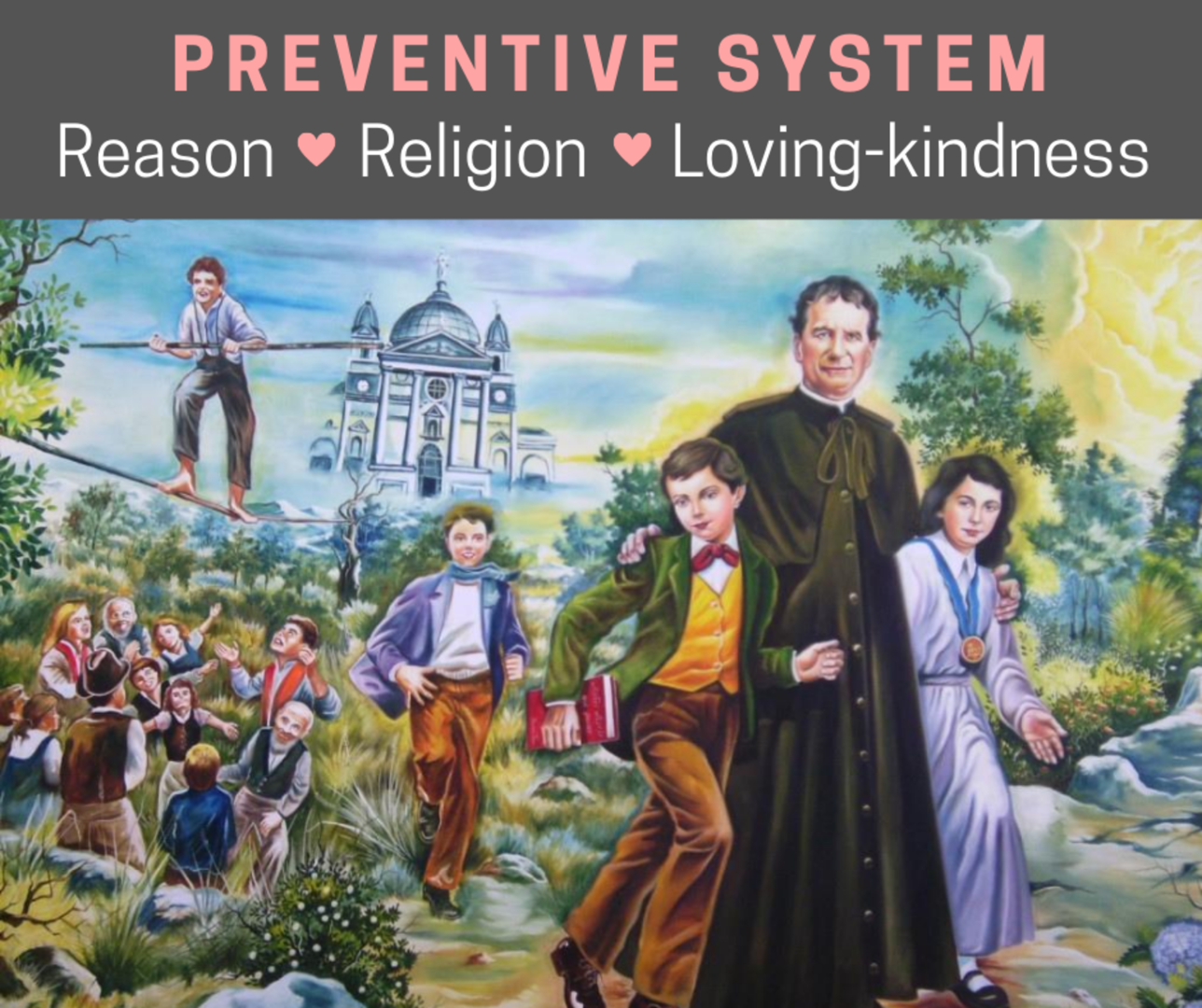 Salesian System of Education
Salesian System of Education
Saint Dominic Savio and Blessed Laura Vicuna are products and examples of Salesian education. They exemplify the kind of student that every Salesian educator strives to form, students who love life, one another and God by knowing they are unconditionally, and consistently being loved by God, their parents and educators.
St. John Bosco School is one of thousands of Salesian schools throughout the world. The Salesian educational movement today is international. St. John Bosco's methods are used in the teaching of both boys and girls from pre-school all the way through college and higher education. Every Salesian school, regardless of country or nationality follows the three-fold system of reason, religion, and loving kindness. Together the three emphasize a way of life, a manner rather than a matter in teaching.
The rapport established between teacher and student in conversation or at play is transferred to the classroom to establish an educational work ethic based on mutual trust, confidence, respect and cooperation, an educational work ethic which forms youth into a master of the conditions in which s/he lives, rather than a competitive self-interest work ethic.
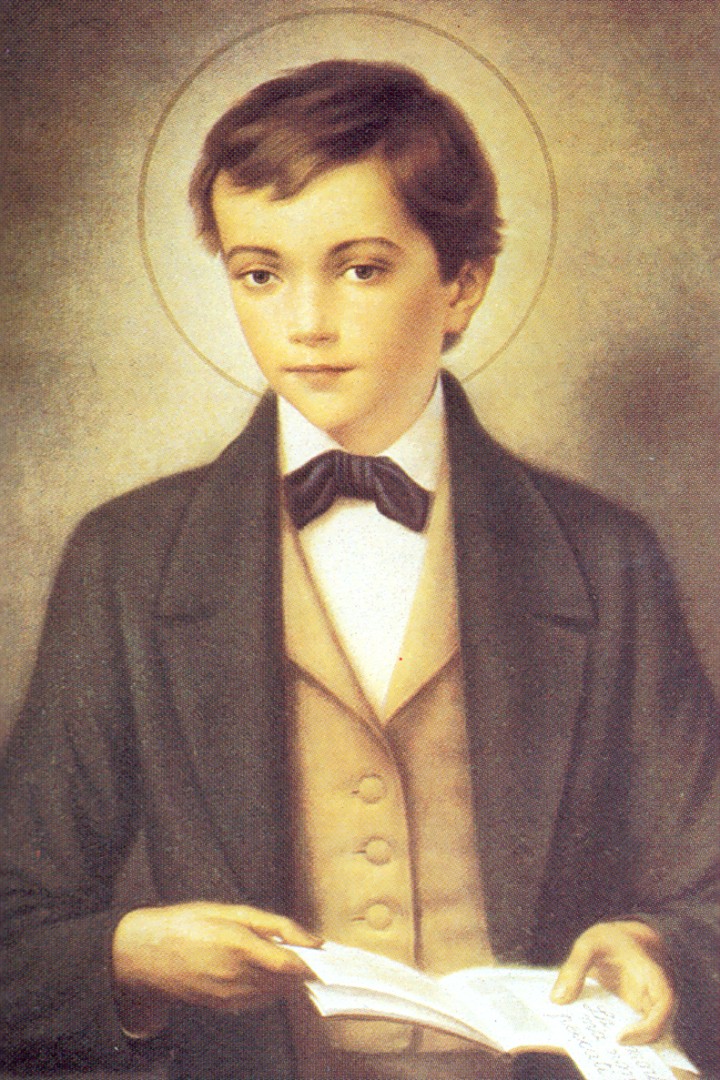 St. Dominic Savio was born in Italy in 1857. He received his first communion when he was seven. On that solemn day, he chose a motto: "Death, but not sin!" and he kept it always. Dominic was an ordinary boy with an extraordinary love for God. At the age of twelve he entered the school run by St. John Bosco. He became famous for his piety and breaking up schoolyard fights.
St. Dominic Savio was born in Italy in 1857. He received his first communion when he was seven. On that solemn day, he chose a motto: "Death, but not sin!" and he kept it always. Dominic was an ordinary boy with an extraordinary love for God. At the age of twelve he entered the school run by St. John Bosco. He became famous for his piety and breaking up schoolyard fights.
Dominic asked John Bosco, "What do you think of me?"
"I think you're good material", answered the priest, with a big smile.
"Well, then",I said Dominic, "You are a good tailor, so if the material is good, take me and make a beautiful garment out of me for Our Lord!"
"A teenager such as Dominic, who bravely struggled to keep his innocence from Baptism to the end of his life, is really a saint", said Pope St. Plus X.
 Blessed Laura Vicuna was born in 1891, three months after the outbreak of civil war in Chile. With her husband in arms, and herself and her two infant daughters in peril, Laura's mother moved across the Andes to raise her daughters in Argentina. Laura's father was killed soon after, and to survive, Mercedes, Laura's mother, became the mistress and common-law wife of a rancher named Manuel Mora.
Blessed Laura Vicuna was born in 1891, three months after the outbreak of civil war in Chile. With her husband in arms, and herself and her two infant daughters in peril, Laura's mother moved across the Andes to raise her daughters in Argentina. Laura's father was killed soon after, and to survive, Mercedes, Laura's mother, became the mistress and common-law wife of a rancher named Manuel Mora.
Mora paid for Laura to attend a boarding school run by the Salesian Sisters, where she was very happy. She made her first communion in 1901, a decisive moment in her life. "Oh my God, I want to love you and serve you all my life," she wrote in her notebook. "I give you my soul, my heart, my whole self."
Home for Christmas holidays, Laura had to fend off the repeated, amorous advances of Mora, finally being forced to flee the house to avoid him. She prayed to be spared the life her mother was leading, offered her own life if they could escape from it. At this time she joined the Sodality of the Children of Mary on December 8, 1901.
In late 1903, Laura became severely ill, and returned to her mother. On January 14, in a drunken rage, Mora began ordering the mother and daughter around. Laura tried to run from the house, but Mora caught her and beat her unconscious. Though she recovered consciousness, Laura never recovered her health, dying eight days later from a combination of the disease and abuse. When Mercedes learned of her daughter's offer to die for Merceded, the mother left Mora and returned to the Church.




